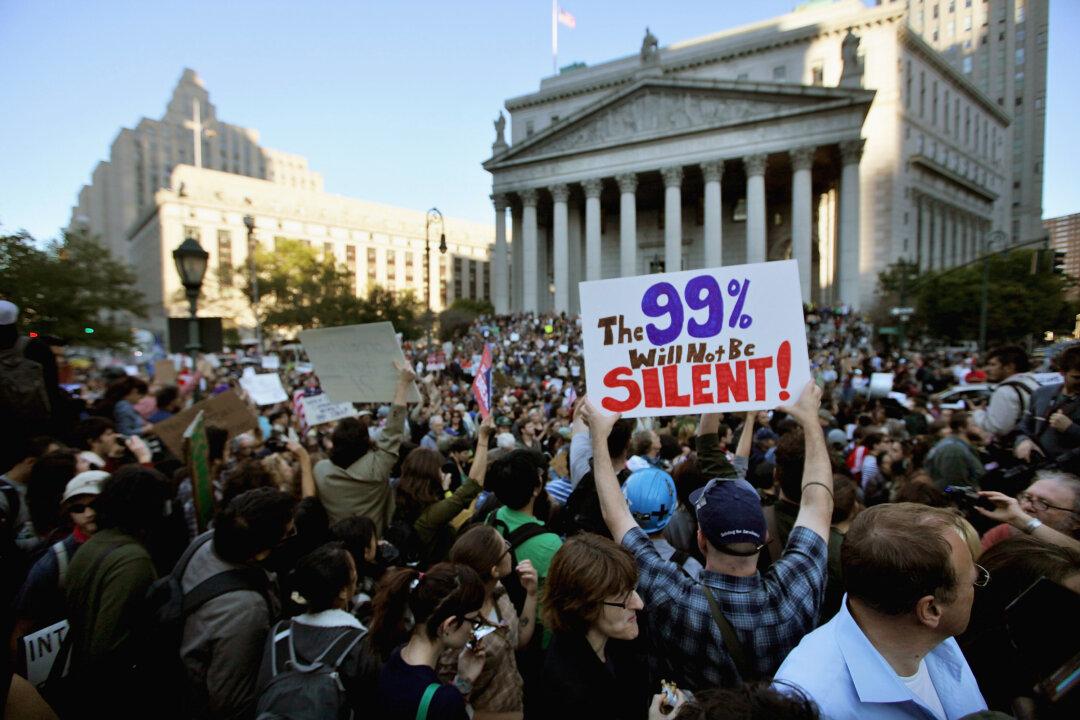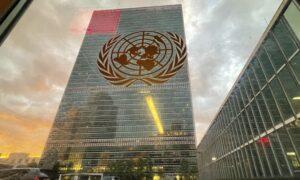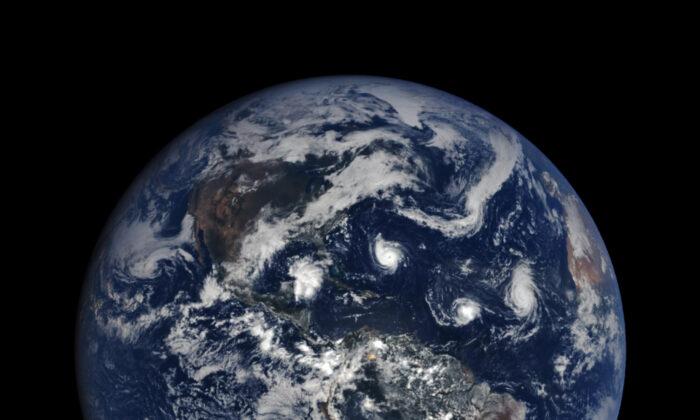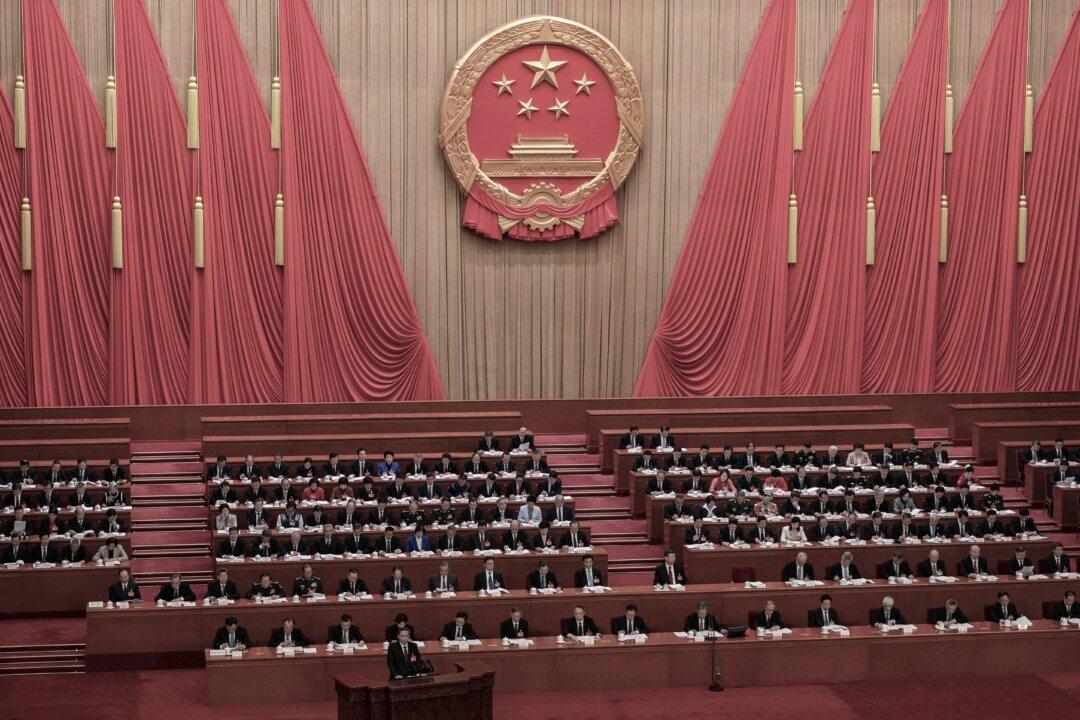Most of us recognize that we are passing through difficult and, in many ways, incomprehensible times. What is difficult to imagine—as it probably was for people in the 20th century—is that we are immersed in an ocean of human mass movements resulting from earlier titanic human struggles.
Totalitarian mass movements have evolved throughout history, especially over the past two centuries. In the 21st century, they are entering a new phase because of urbanization, technology, and “new total war” capabilities.
As a result, political parties worldwide are falling into an increasingly less meaningful role without even understanding that their circumstances have changed, perhaps irrevocably.
At the same time, new iterations of totalitarian mass movements have grown out of the embers of 20th-century globalist movements such as Nazism and communism and have become amorphous—shape-shifting—and identifiable only by some common denominators, particularly anti-state sentiment.
Meanwhile, popular understanding of the terms “totalitarianism” and “mass movements” has become lost to general discourse. “Totalitarian” movements are not merely recognized by autocratic and tyrannical systems but arise as movements with a globalist agenda, intending to impose anti-national domination bound around an ideology, even a loose and constantly fluctuating ideology.
Other types of mass movements have different agendas or ideologies, including nationalism, but tend not to be expansionist beyond the borders of their societies. They, too, may be autocratic and tyrannical but usually in direct response to globalist movements.
Today, societies around the world, particularly in the West, are finding themselves embroiled in wars between totalitarian globalist mass movements on the one hand and nationalist mass movements on the other, at a time when political parties—which had once channeled various types of mass social behavior—have begun to have increasingly less control and relevance because they lack the ability to set agendas.
It is not surprising, then, that separate but linked globalist, totalitarianist mass movements such as urban-origin climate change politics, gender and generational politics, and pandemic fear are automatically arrayed in lockstep against nationalist mass movements, the “traditional family,” and earlier traditional religious mass movements. As a result, these globalist movements are also essentially designed to promote an irrevocable generational divide, which translates into the breakup of the traditional family unit.
Therein lies the stark linkage between the 21st-century globalist movement(s) and the 20th-century movements by the Nazis, the Soviet, and Chinese communists. The resultant contempt by the “rising” generation of globalists toward the outgoing generations is not seen in most generations but is particularly evident when the globalist and totalitarianist movements are on the march, as with the 20th and 21st centuries’ movements. It should not be confused with the normal intergenerational differences that mark social evolution.
How the 21st-century globalist mass movements have evolved—exclusively from urban settings—and are spread as a result of newer technologies may make them appear differently from the mass movements or ideologies of the 20th century, but fundamental similarities can be identified. So while these movements superficially present themselves differently than those of the 19th and 20th centuries, they tend to be as amorphous and difficult to define as similar movements of the Nazis and communists when they began, separately, to coalesce during the 20th century.
Each throws up its demagogues, usually until a central authority figure emerges.
Adolf Hitler, for example, was not the founder of Nazism, and neither was Joseph Stalin the founder of Soviet communism. Still, each assumed the pinnacle of their movements and wielded them to their maximum effect until the passing of the leaders or the defeat or collapse of the movements.
As a result of the failure of the West to conquer the entirety of the 20th-century communist totalitarian movements—by leaving alive, in particular, the Chinese Communist Party (CCP)—the totalitarian movements of the 21st century reemerged with the morphing of new globalist mass movements supported by the CCP. These include the climate change movement, the global pandemic fear movement, the CCP’s tool of the Belt and Road Initiative, gender politics, the “culture wars,” and other mass actions.

The First Arab Spring in 2011 seemed to have had the making of a new totalitarian mass movement. Still, it did not coalesce sufficiently to gain momentum, not that the transnational Muslim movement has run out of steam and remains opposed to the nationalist Muslim societies.
What links the 21st-century variations of totalitarian mass movements is the sense of globalist identity and the abandonment of national identity, often to the point of extreme hostility to the geopolitical state in which the adherents live. As it was during the 20th-century totalitarian mass movements, this is not a phenomenon that is understood through rational discussion between adherents or opponents of the phenomena involved because that discussion does not occur.
“Rational discussion” occurs only among disinterested observers, who are distrusted by the belief systems of both the globalists and the nationalists. Indeed, the “nationalists” themselves need to be understood to include the division between nation-state nationalists and tribal (such as ethnic or cultural) nationalists.
Mass movement rivalry, however, is a factor in determining the strategic directions of nation-states and parallels (and is intertwined with) the rise and refinement of the phenomenon of total war since Napoleonic times.
The 20th century was possibly the most profound recent era of totalitarian movements, especially when seen in hindsight. It was also the century of the evolution and rise of political parties, many of which were created to take advantage of the political climates created by mass and totalitarian movements. We are now beginning to see how they are shaping the 21st century. Mass movements, political parties, and political correctness all contribute to the widespread societal desire for—and reliance on—continuity of life.
But what we may see as the 21st century evolves is the peaking of some of the phenomena that characterize the tendency toward totalitarian mass movements, and we are already beginning to see the fact that political parties will either be transformed in nature or be supplanted by other popular instruments. In other words, political parties are today nothing like what they were a century ago or even a half-century ago. That means that the popular concept of “democracy” has equally transformed over the same period.
Can we determine the lifespan or life cycle of various types of mass movements?
Are nationalist mass movements usually just a response or reaction to either the threats of submergence to a globalist movement or a response to the threat of an imperialistic conquest?
Moreover, are the current globalist/totalitarian movements breaking or beginning to transform into something more sinister?
It is important, as Hannah Arendt warns in “The Origins of Totalitarianism,” to recognize that “the struggle for total domination of the total population of the earth, the elimination of every competing non-totalitarian reality”—as fabianist and utopianist as this sounds—“is inherent in the totalitarian regimes themselves.”
She noted: “If they do not pursue global rule as their ultimate goal, they are only too likely to lose whatever power they have already seized.”
This may account for the obsessiveness of the “true believers” in demanding recognition of their worldview.
Current political parties and party leaders throughout the West have—as “normal” political life has changed and as societies themselves are changing—adapted to the spontaneous mass movements that come out of both distrust in political parties and governments and the simultaneous need for continuity of social life. They also emerged from earlier totalitarian movements that offered a narcoleptic, fatalistic relief from reality. Politicians and parties have happily abandoned their foundational principles in order to capture control of these emerging mass movements, such as climate change, pandemic fear, culture wars, or gender politics.
So we are seeing that the base-level demands and fears of society have changed dramatically over the past century with the pace of change caused by technology, wealth, and urbanization. They have sought solace in often apocalyptic “death cults” that preach the imminent collapse of society and the end of the viability of human life, or, indeed, all organic life.
Political parties, which cannot control this public fear of chaos, instead attempt to ride at the head of the movements. They are encouraged by a very small minority of activists, wielding a disproportionate level of influence because they represent key donors to (particularly) globalist political agendas, even without an understanding that they are spearheading movements beyond their comprehension.
As a result, however, the parties have themselves become lost and unrecognizable. And they have become, ultimately, unsurvivable because they have been unable to ride the apocalyptic mass movements and thus have instead become servants to them.
The craving for the continuity of life is, in essence, the opposite of the fear of the unknown, the greatest fear that besets societies. Fear of the unknown is our visceral “fear of the darkness.” As a result, “continuity” is so vital to the calm of societies that people, huddled together in communities, will do almost anything, including marching into disaster, to create or perpetuate the constancy of collectivism.
The promise of continuity is a vital function of the “totalitarian mass movements,” which tend to be anti-national or globalist in design, as was the case with Nazism and communism, even though Nazism was imposed initially as a nationalist form of socialism, like Italian fascism (which was also imperialist in its desire for conquest, but not globalist). The mass movements created messianic belief systems, which required no substance or verifiable basis of logic; they merely provided comfort and protection to the masses until they burned out or were defeated.
We have seen these 20th-century forms of totalitarian mass movements evolve and become creatures of the 21st century, attuned to modern technologies, attuned to the decline in classical religious belief systems (which were themselves mass movements), and attuned to the accelerated timescales of life in the current century. Perhaps today’s movements are yet to be compared with the mass movements and ideologies of the 20th century because we have not yet seen them drawn into focus by specific demagogues.
Many politicians in numerous countries attempt or have attempted to ride the autocracy that the globalist trends have offered, bearing in mind that the globalist mass movements—such as climate change, pandemic fear, or gender politics—have yet to find unifying leaders. As a result, political officials at all levels of society have utilized the mass public sentiments—the mass psychoses—as justification for escalating autocracy as public trust in governance has declined.

But perhaps these trends take root differently in different societies and grow simply because the globalist agenda is merely allowed to be implicit in the movements rather than being specifically identified with a particular, deeper ideology and sponsoring source.
These totalitarian (globally oriented) mass movements have often been opposed by specifically nationalist mass movements (often created in direct response to the globalist totalitarian movements), some of which can be identified by charismatic leaders such as former President Donald Trump in the United States and Brexit leaders in the UK, among others. As with entire societies consumed by totalitarianism, individuals caught up in the momentum rarely recognize the origin of the belief systems that generate highly emotional commitments.
These modern mass movements—globalist/totalitarian and nationalist/authoritarian or nationalist/libertarian—have each essentially consumed political parties, almost unbeknownst to the parties themselves. In the United States, the “old Democratic Party” and the “old Republican Party” are barely evident, except for a few icons used for identification purposes. The same is true of the British parties—the Conservative Party began to incorporate a greater base of what used to be called “blue collar” workers, for example, and the Labour Party became the party of the urban elite and wealthy. A reversal also occurred in some respects with Australia’s Liberal (conservative) Party and the Australian Labor Party.
Similar obfuscation of the rationale and purposes of political parties has taken place throughout the Western world. The modern political party structures in Africa, the Middle East, and Latin America (and elsewhere) bear little of their original structure and ideological framework or commitment to protecting the state or interest groups that the parties of the 19th and 20th centuries once had.
Political parties, as we have come to know them, are, in reality, a very modern thing, although they have occurred repeatedly in various forms throughout history. But the modern, Western form of political party emerged, matured, and transformed. It is now essentially meaningless, even though existing parties still have their antique machinery to fight election campaigns and field candidates for office. But they lack any message other than “join us because we are the winning side” or “the side that will give you protection.”
In all of this, we can see that mass movements—whether globalist or nationalist—continue to have viability in that the mechanisms exist to generate their support bases, largely when they focus primarily on belief rather than logic. That means that they essentially demand that the individual ceases to be an individual. Mass movements are now more readily able to begin and grow due to modern communications media but with the reality that “journalistic” or “activist” dominance of formal and informal media tends to be concept and belief-based rather than experience-based.
Totalitarianism differs from nationalist mass movements in that totalitarianism is expressly globalist (even if its origins are disguised), which is why the CCP is so heavily involved in the 21st-century globalist mass movements. Initially, the CCP’s goal was not so much to strengthen its globalist outlook as to weaken all its opponents, particularly the United States. Arguably, it is also why the United States, in its own defense as a global power, is also promoting the retention of its “rules-based world order.” This begs the question of whether the United States can be a globalist abroad and nationalist at home.
Globalist movements are not new. In earlier times (perhaps including Roman times), they were less directed by a codified doctrine and far more linked to direct military action. We saw, in earlier iterations under Genghis Khan (13th century) and Timur (Tamerlane; 14th–15th centuries), for example, a more subconscious belief in the prospect of “global” domination, but the process evolved through the centuries. The French “Terror” outgrew its founders, such as Citoyen Maximilien Robespierre, in the late 18th century and was captured and directed efficiently by Emperor Napoleon Bonaparte I by the early 19th century. It was no surprise that Napoleon took the title of emperor rather than king because he was expressly bent on global expansion.
Even there, Napoleon could have been mistaken for merely an imperialist—a seeker after subject states or satrapies—rather than a globalist who seeks to control the world as a singular entity.
But could Nazism and communism have created their totalitarian, globalist mass movements if Napoleon had not already disrupted the status quo in Europe and Eurasia in the late 18th and early 19th centuries? In all of this, globalism emerges as the enemy of the nation-state, whether republican or monarchical; it is also certainly antithetical to the popular concept of “democracy,” which is merely an articulated version of the “social contract” between the governed and the governors, the rulers and the society.
What is of immediate reality to most people, however, is that the new mass movements have overtaken the role of political parties. Political parties have attempted to respond by becoming part of the new totalitarian movements (often rolled together in a range of beliefs and opposition to older belief systems) or as part of the nationalist counter-movements.
So the political parties have attempted to appear to be in the leadership of the mass movements—totalitarian or nationalist—but are merely being buffeted by the waves (or tsunami) of the mass movements. At present, political parties hold the keys to gaining governmental power because that is how the systems have been written into laws and constitutions. But it is no surprise that the societal view of government and political parties, politicians, and the viability of elections is at a low ebb.
Can these phenomena be understood if no one is willing to analyze and discuss them?
What are the links between, for example, urbanization and the various strands of globalist populism?
The 21st-century globalist movement owes much of its penetration in the West to the professional work of Soviet psychological warfare that outlasted the USSR itself and to the natural utopianist views of large urban population areas. And what happens to the future of democracy and of viable national economies?
As Ms. Arendt said: “The structurelessness of the totalitarian state, its neglect of material interests, its emancipation from the profit motive, and its nonutilitarian attitudes in general have more than anything else contributed to making contemporary politics well-nigh unpredictable.”
How can those seeking political power hope to find a 21st-century formula for success if they cannot understand what drives the crowd? What can break the grip of mass psychoses? Why do some societies better resist the psychosis of totalitarian movements than others? Some of the answers are known. But will they be of interest to the political parties still seeking to ride the tsunamis of mass movements?







